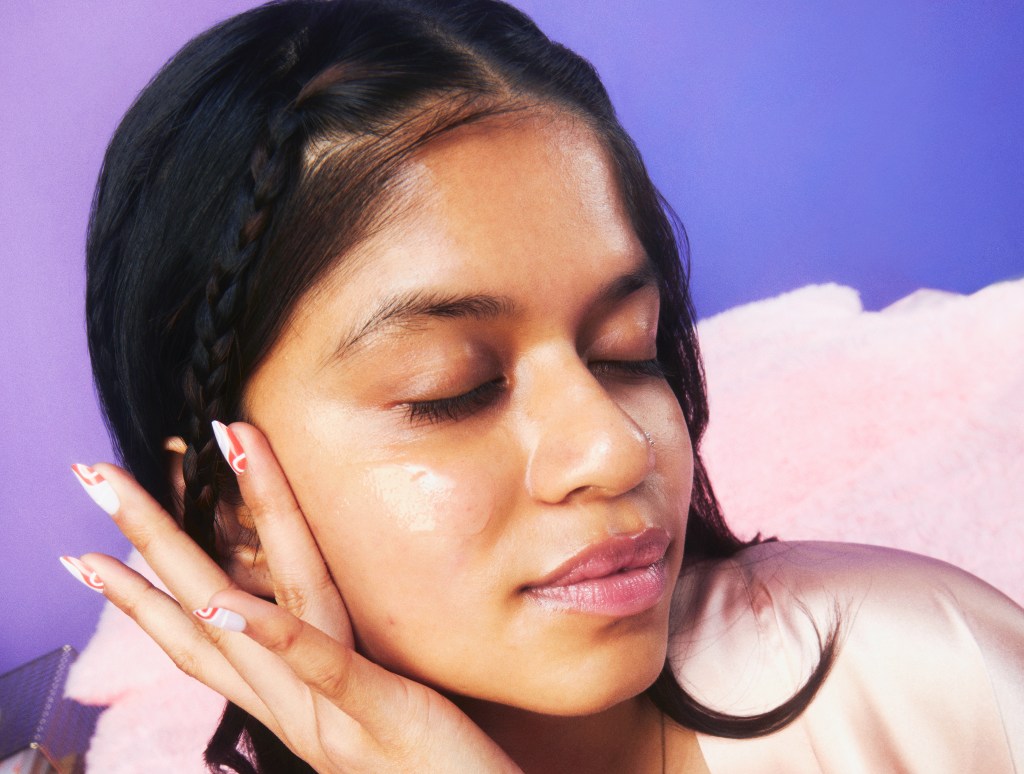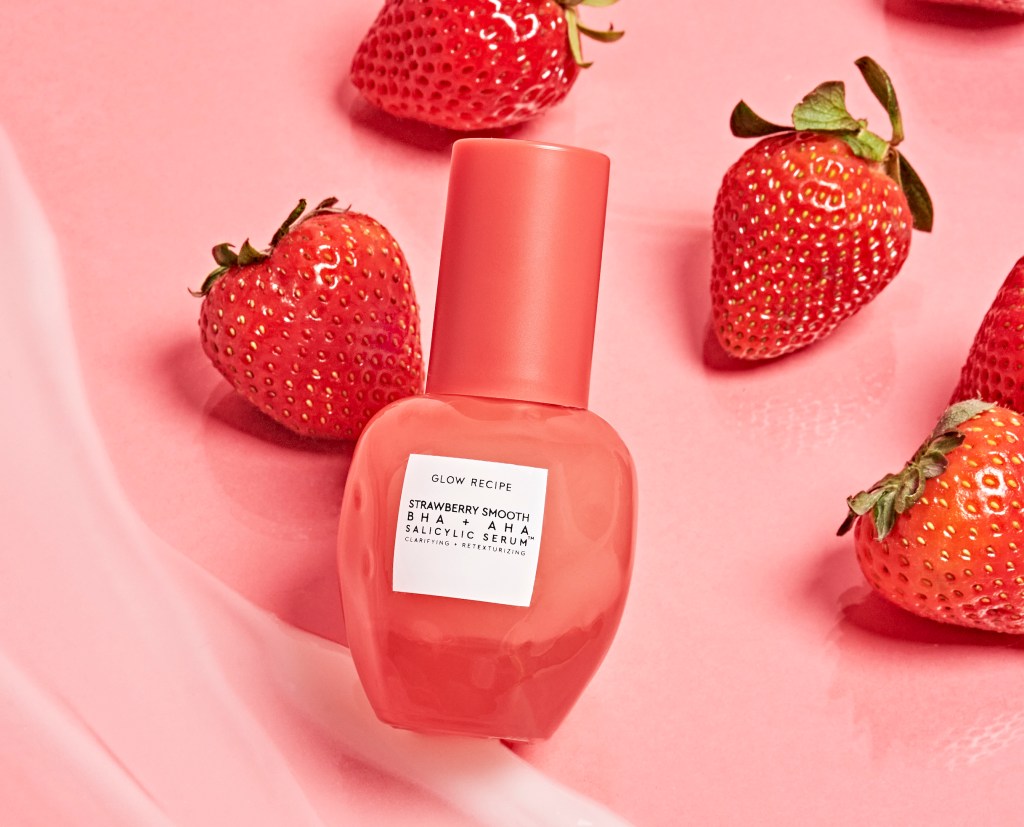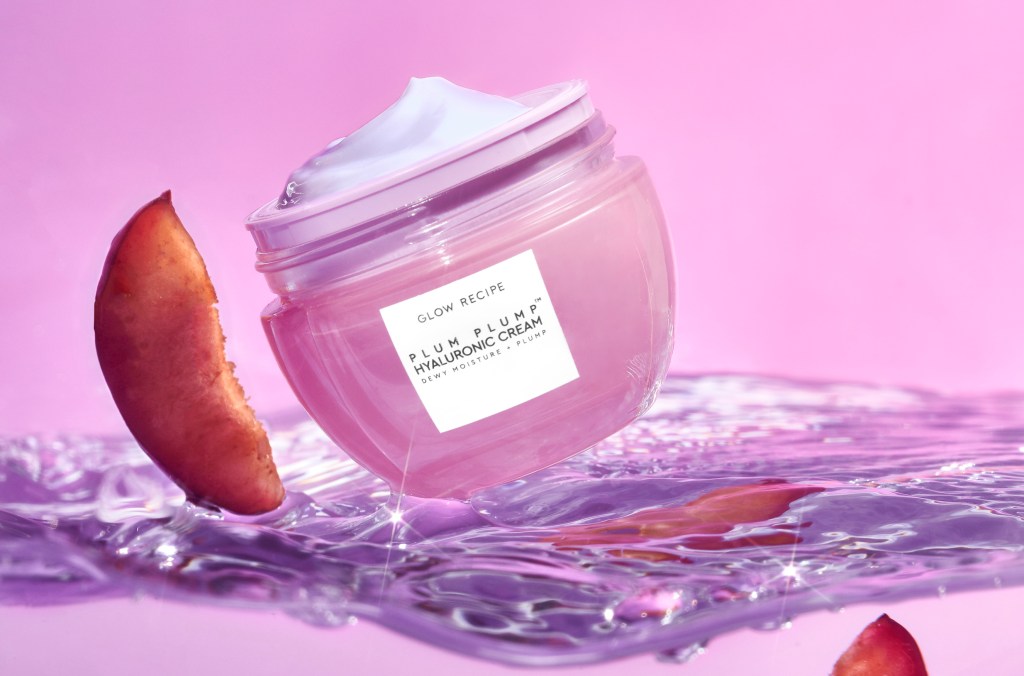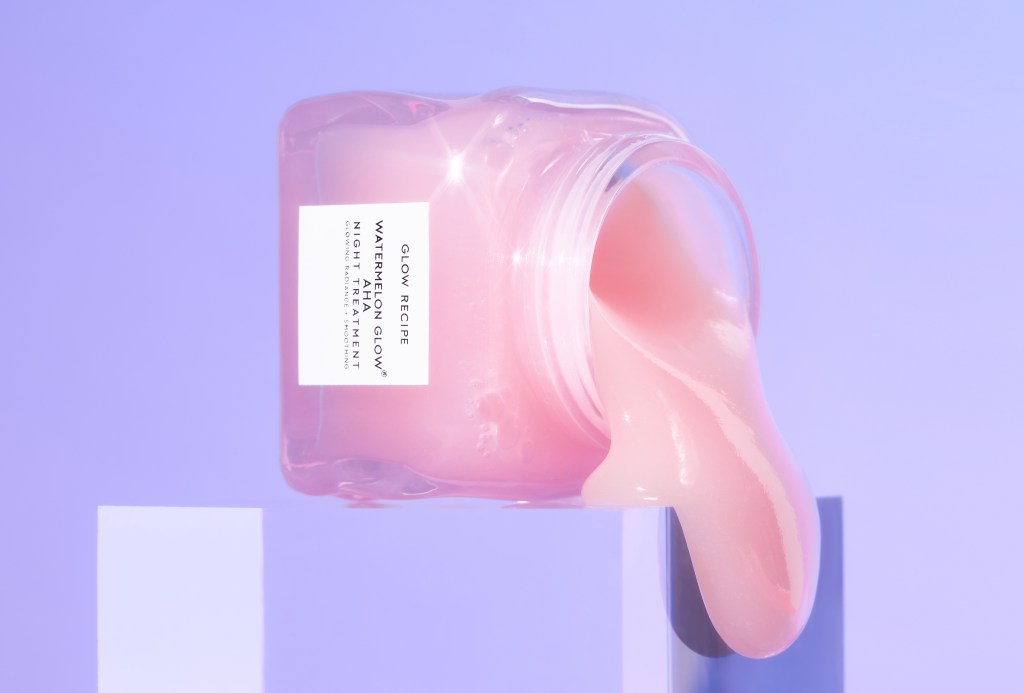
Why Exfoliation & Hydration Are the Perfect Match – Glow Recipe
Sometimes, things are better in pairs. While there are synergistic ingredient pairings that amp up your skincare routine, actual product benefits can play well together, too. One such example? Pairing exfoliation with hydration. “Exfoliating products are commonly paired with hydrating ones because the benefits complement each other,” explains Joshua Zeichner, M.D., Associate Professor Director of Cosmetic and Clinical Research Department of Dermatology at the Mount Sinai Hospital in New York City.

Specifically, Zeichner notes that exfoliating acids — think AHAs, BHAs, and PHAs — are the perfect predecessor or complement to hydrating ingredients, such as hyaluronic acid, your skin routine. Still not sold on the power couple? Keep reading to learn how the duo benefits skin.
They keep skin better hydrated
Fun fact: Hydrating ingredients, such as hyaluronic acid, can only reach skin if it’s not blocked by dead skin cells. That’s where exfoliation comes in handy. Alpha hydroxy acids, or AHAs — which include glycolic, lactic, and mandelic acids — are water-soluble actives that work by dissolving the bonds between dead skin cells and the healthy epidermis, effectively sweeping those cells from your skin.
Meanwhile, BHAs (beta hydroxy acids), including the acne-fighting superhero and eponymous salicylic acid found in our Strawberry Smooth BHA+AHA Salicylic Serum, go a bit deeper with their exfoliation efforts. Unlike their AHA counterparts, BHAs are oil-soluble, which means they effectively remove gunk, dirt, and, yes — oil — from pores. It’s also worth namechecking the lesser-known PHAs (polyhydroxy acids), which are much gentler on skin than their counterparts.

All told, clearing away debris from skin’s surface means skin can better soak up the hyaluronic acid, which in turn pulls water into skin to plump and hydrate.
They minimize risk of dryness and irritation
When we’re talking about hydration, we’re almost always speaking of hyaluronic acid. And, although hyaluronic acid is an acid by name, it’s not really by trade: It works differently than its exfoliating counterparts. “Hyaluronic acid is called an acid, but it actually is a sugar and does not provide exfoliating affects,” says Dr. Zeichner. “It instead hydrates dry, dehydrated skin.”
Specifically, hyaluronic acid slows the rate at which water evaporates from the skin surface to help maintain skin’s hydration levels. Studies also confirm the molecule — also referred to as sodium hyaluronate — can bind up to 1000 times its weight in water, giving it its humectant properties that are almost the exact opposite of the aforementioned exfoliating acids. “Hyaluronic acid has humectant properties, acting like a sponge to pull in hydration to the skin’s outer layer,” explains Zeichner.
Pairing hyaluronic acid with exfoliating acids is a good idea, particularly if your skin tends to run on the sensitive side. In leaving skin hydrated, it counteracts any of the drying effects the exfoliating acids may potentially cause — essentially balancing them in real time.
They offer complementary benefits
With exfoliation and hydration, you get the best of both worlds. “Exfoliating acids are commonly paired along with hyaluronic acid because the benefits complement each other,” Dr. Zeichner says. “The hydroxy acids provide the chemical exfoliation and the anti-aging effects, while hyaluronic acid helps maintain skin hydration and minimize potential irritation.” Simply put: This combo is straight-up set up for success.

To maximize the results, Zeichner suggests using these ingredients as part of a moisturizer or with one layered on top. ‘Hyaluronic acid is good at grabbing onto water, but not keeping it in place,” Zeichner explains. “That’s why it is frequently combined with an emollient or occlusive ingredient [as part of a face moisturizer or cream].” With Plum Plump Hyaluronic Cream, which alone packs five molecular sizes of hyaluronic acid, you can guarantee you’re making the most of it; it also has polyglutamic acid, a peptide that helps lock in moisture and boosts the efficacy of hyaluronic acid. Together, they’re a one-two punch of hydration.
Get the best of both worlds
If you’re already a Glow Recipe fan, then you’re in luck: Pairing gentle exfoliants with hyaluronic acid has been the status quo for many of our formulas, since we’re all about effective formulas everyone can use. In fact, we were at the forefront of that with our original Watermelon Glow Sleeping Mask, which bucked the norm of masks that were only either hydrating or decongesting clay formulas.
You can find hyaluronic acid paired with plant-derived alternatives, such as gentle hibiscus AHA, in the Watermelon Glow Pink Dream Body Cream. In Watermelon Glow Hyaluronic Clay Pore-Tight Facial, meanwhile, it’s not just acids but a combination of BHA, PHA, and watermelon enzymes that deliver mild (but meaningful) exfoliation; the formula has both hyaluronic acid and hyaluronic clay to clear pores without stripping away hydration. Finally, because PHAs offer milder exfoliation, they work particularly well in products to prep skin for treatments and moisturizers, such as our Watermelon Glow PHA+BHA Pore-Tight Toner.

This clever combination is also what makes the new Watermelon Glow AHA Night Treatment such a powerful formula. Instead of using just any acid, it harnesses a 2.5% blend of gentle AHAs that delivers the power of 10% glycolic acid — without any dryness or irritation. To then actively hydrate skin, it has not one, not five, but seven different molecular sizes of hyaluronic acid to ensure every layer of skin is properly hydrated. The end result: Smoother, brighter skin by morning.
Ultimately, pairing exfoliation and hydration in a single product offers maximum reward with minimal risk. If that doesn’t make for a compelling argument, we’re not sure what does.
Keep reading about getting the best active ingredients: